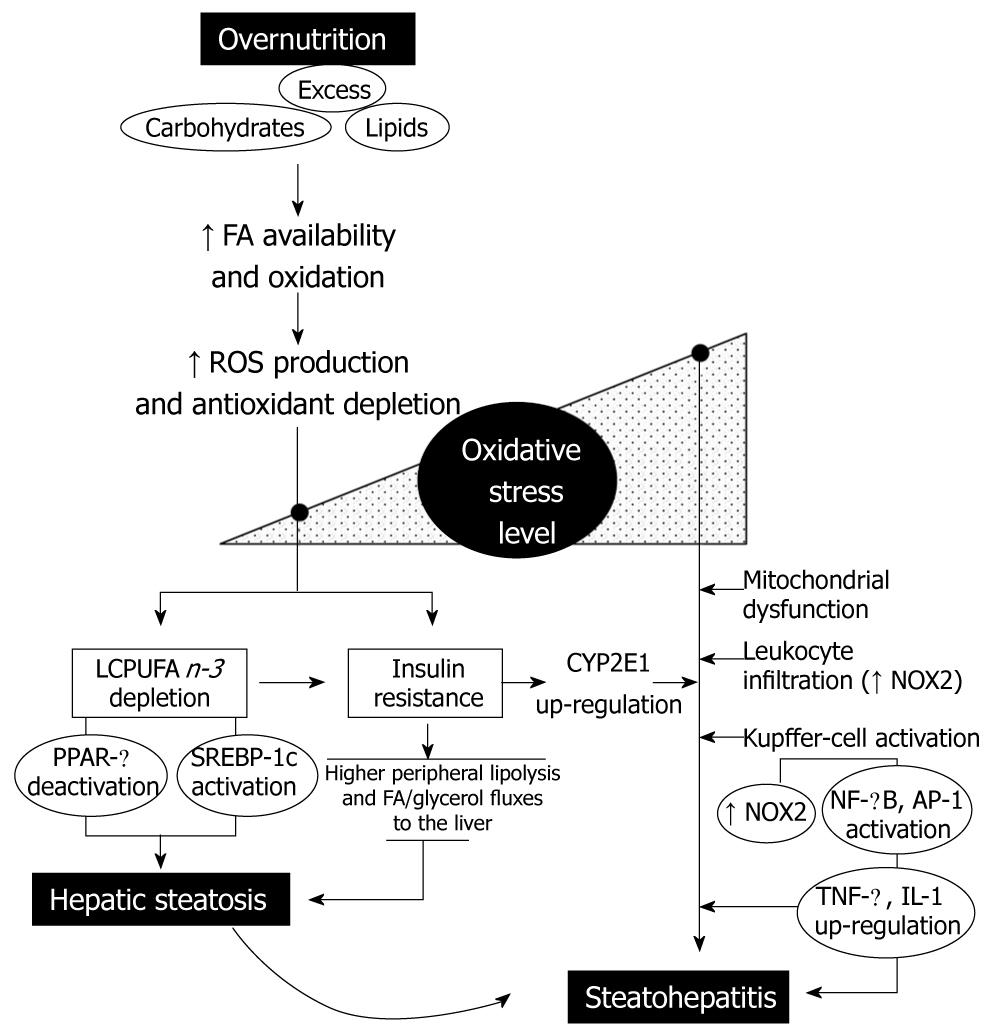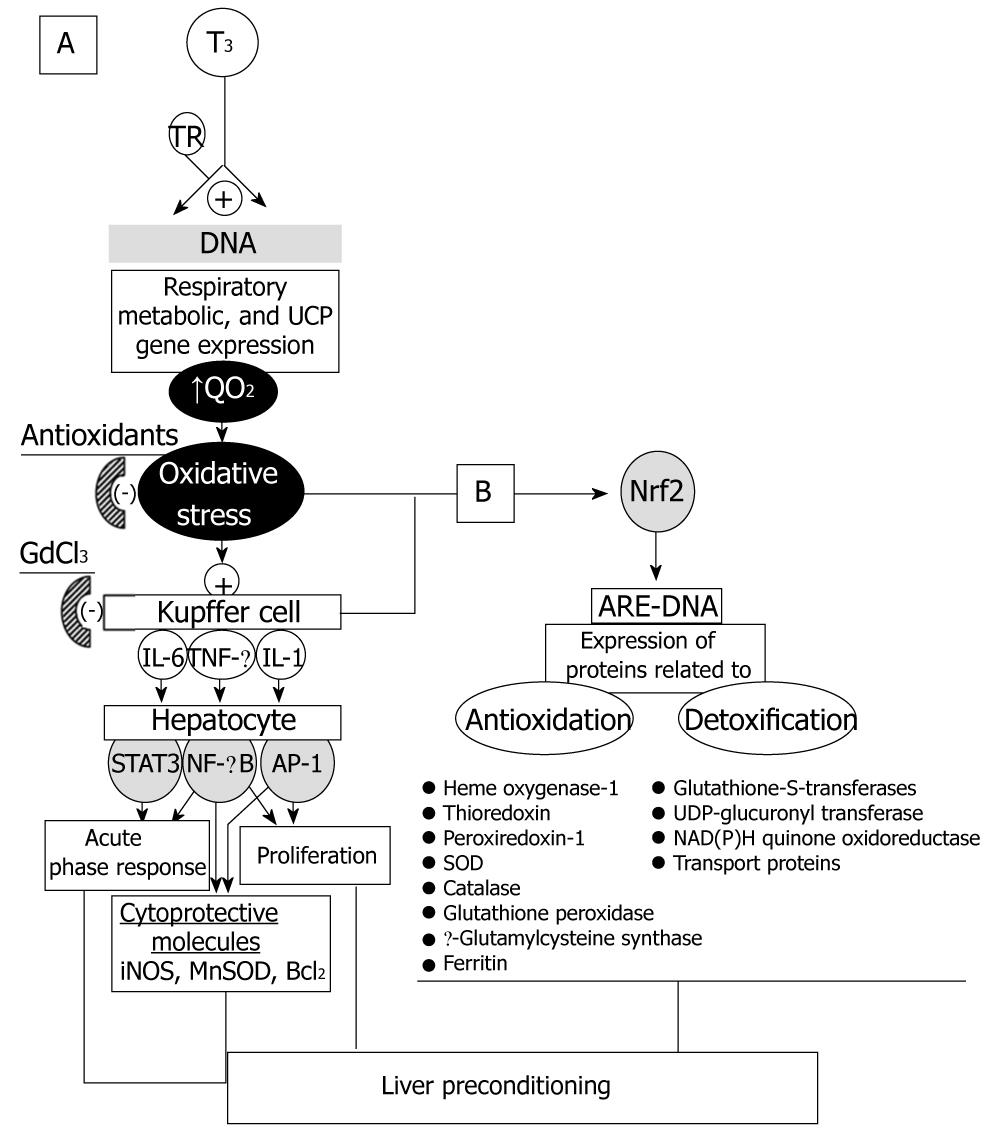Copyright
©2009 Baishideng.
Figure 1 Interrelationships between the level of oxidative stress and insulin resistance, leading to hepatic steatosis and its progression to steatohepatitis, associated with overnutrition.
AP-1: Activating protein 1; CYP2E1: Ethanol inducible form of cytochrome P450; FA: Fatty acids; IL-1: Interleukin-1; LCPUFA; Long-chain polyunsaturated fatty acids; NF-κB: Nuclear factor-κB; NOX2: NADPH oxidase in phagocytic cells; PPAR-α: Peroxisome proliferator-activated receptor-α; ROS: Reactive oxygen species; SREBP-1c: Sterol regulatory element binding protein-1c; TNF-α: Tumor necrosis factor-α.
Figure 2 Oxidative stress signaling in thyroid hormone (T3) liver preconditioning as mediated by redox-sensitive transcriptional factors NF-κB, AP-1, and STAT3 (A) or Nrf2 (B).
AP-1: Activating protein 1; ARE: Antioxidant responsive element; GdCl3: Gadolinium chloride; IL: Interleukin; iNOS: Inducible nitric oxide synthase; MnSOD: Manganese superoxide dismutase; NF-κB: Nuclear factor-κB; Nrf2: Nuclear factor-erythroid 2-related factor 2; QO2: Rate of oxygen consumption; TNF-α: Tumor necrosis factor-α; STAT3: Signal transducer and activator of transcription 3; TR: Thyroid hormone receptor; UCP: Uncoupling protein.
- Citation: Videla LA. Oxidative stress signaling underlying liver disease and hepatoprotective mechanisms. World J Hepatol 2009; 1(1): 72-78
- URL: https://www.wjgnet.com/1948-5182/full/v1/i1/72.htm
- DOI: https://dx.doi.org/10.4254/wjh.v1.i1.72










